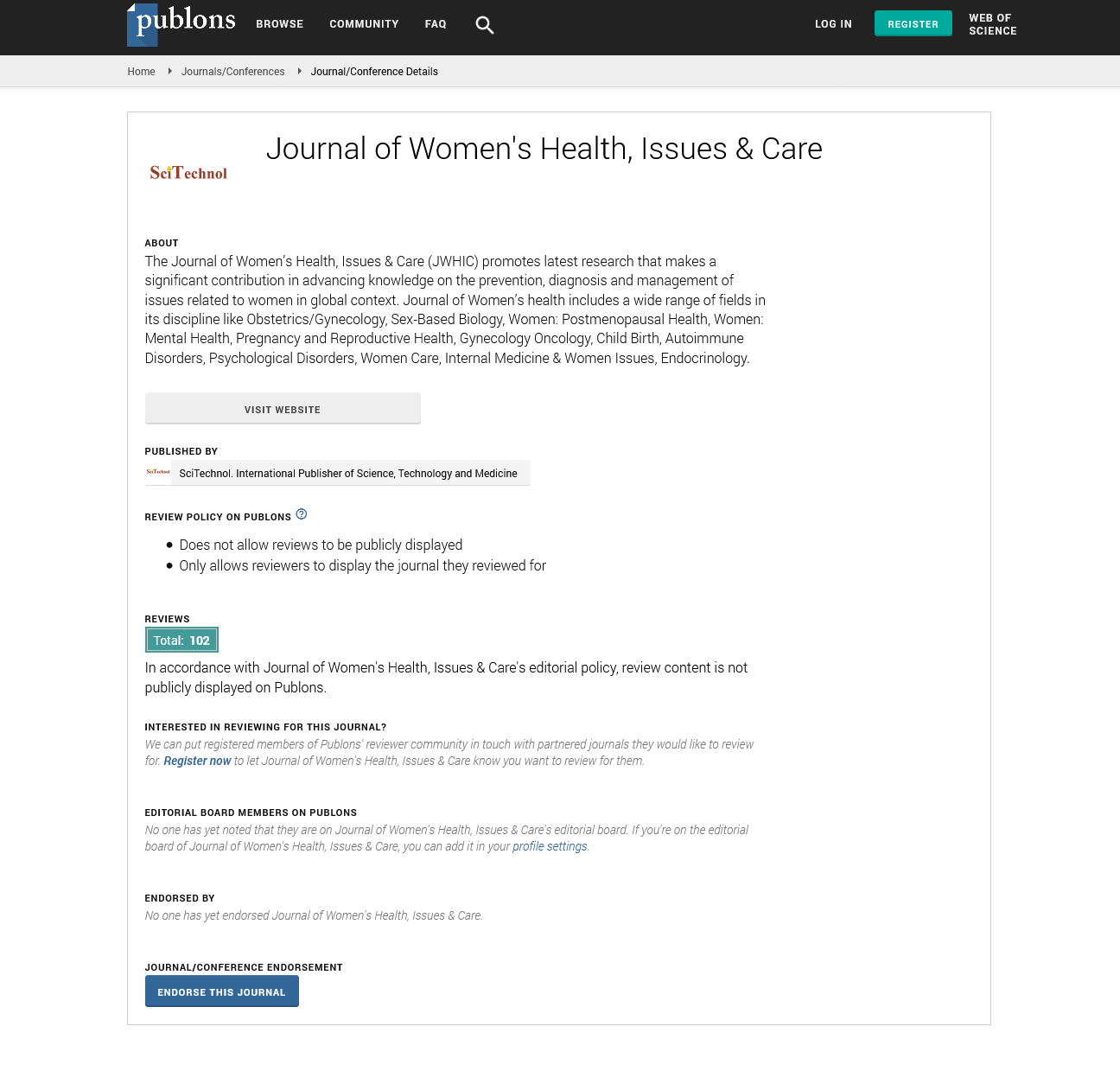Opinion Article, J Womens Health Vol: 12 Issue: 2
Myasthenia Gravis the Complexities of an Autoimmune Neuromuscular Disorder
Elenio Lopez*
Department of Obstetrics and Gynecology, National and Kapodestrian University of Athens, Greece
*Corresponding Author: Elenio Lopez
Department of Obstetrics and Gynecology
National and Kapodestrian University of Athens
Greece
E-mail: lopezelenio114@gmail.com
Received date: 22 March, 2023, Manuscript No. JWHIC-23-99316;
Editor assigned date: 24 March, 2023, PreQC No. JWHIC-23-99316 (PQ);
Reviewed date: 15 April, 2023, QC No. JWHIC-23-99316;
Revised date: 22 April, 2023, Manuscript No. JWHIC-23-99316 (R);
Published date: 28 April, 2023, DOI: 10.4172/2325-9795.1000432.
Citation: Lopez E (2023) Myasthenia Gravis the Complexities of an Autoimmune Neuromuscular Disorder. J Womens Health 12:2.
Keywords: Myasthenia Gravis
Description
Myasthenia Gravis (MG) is a chronic autoimmune neuromuscular disorder that affects thousands of people worldwide. It is characterized by muscle weakness and fatigue, particularly in the muscles responsible for voluntary movements. Myasthenia gravis affects the body's voluntary muscles, particularly those that govern the eyes, mouth, throat, and limbs. The condition can affect anyone at any age, but it is more common in young women (aged 20 to 30) and men aged 50 and older. By shedding light on this condition, we aim to enhance understanding and support for those living with myasthenia gravis. Myasthenia gravis occurs when the immune system mistakenly targets proteins called Acetylcholine Receptors (AChR) or Muscle-Specific Kinase (MuSK) at the neuromuscular junctions. These receptors play a crucial role in transmitting signals between nerves and muscles, enabling proper muscle contractions. In MG, the immune system produces antibodies that attack these receptors, resulting in impaired communication and muscle weakness.
Symptoms and diagnosis
Symptom of myasthenia gravis is muscle weakness that worsens with activity and improves with rest. The weakness often starts in the muscles that control eye movements, facial expressions, chewing, and swallowing. Over time, it can progress to affect other muscles, including those in the limbs, neck, and respiratory system. Diagnosing myasthenia gravis can be challenging, as symptoms can be similar to other neuromuscular conditions. A comprehensive evaluation is necessary, involving a detailed medical history, physical examination, blood tests to detect the presence of specific antibodies, and electrophysiological studies to assess nerve and muscle function. Additional tests, such as the edrophonium or ice pack test, may be performed to observe temporary improvements in muscle strength, further supporting the diagnosis. One of the most common areas affected by MG is the muscles that control eye movements. This can lead to double vision, drooping eyelids (ptosis), and difficulty focusing. Tasks such as reading, driving, or watching television become arduous and may require frequent breaks or assistance.
Treatment and management
While there is no cure for myasthenia gravis, various treatment options are available to manage the symptoms and improve quality of life. The choice of treatment depends on the severity of symptoms and the individual's overall health.
Medications: Cholinesterase inhibitors, such as pyridostigmine, are commonly prescribed to enhance muscle strength by increasing the availability of acetylcholine, the neurotransmitter responsible for muscle contractions. Immunosuppressive drugs, including corticosteroids, azathioprine, and mycophenolate, may also be used to suppress the abnormal immune response.
Thymectomy: For individuals with thymomas (tumors of the thymus gland) or those under the age of 60, surgical removal of the thymus gland (thymectomy) may be recommended. Thymectomy aims to reduce the production of abnormal antibodies and improve symptoms and long-term outcomes.
Intravenous Immunoglobulin (IVIg) and plasmapheresis: In severe cases or during disease exacerbations, IVIg or plasmapheresis may be used. IVIg provides high doses of healthy antibodies to temporarily suppress the autoimmune response, while plasmapheresis involves removing plasma containing the antibodies and replacing it with donor plasma or albumin.
Supportive measures: Maintaining overall health is essential in managing myasthenia gravis. This includes adopting a balanced diet, regular exercise (tailored to individual capabilities), managing stress levels, and ensuring adequate rest to conserve energy. Myasthenia gravis can significantly impact an individual's daily life, limiting their ability to perform routine activities and affecting their emotional wellbeing.
 Spanish
Spanish  Chinese
Chinese  Russian
Russian  German
German  French
French  Japanese
Japanese  Portuguese
Portuguese  Hindi
Hindi 



